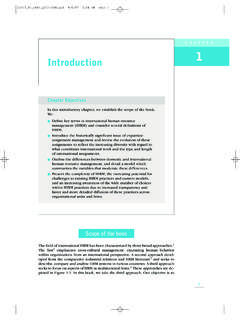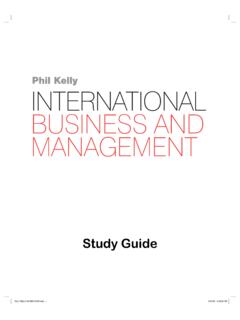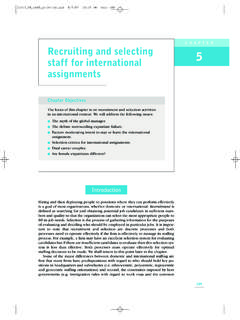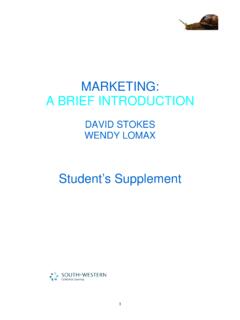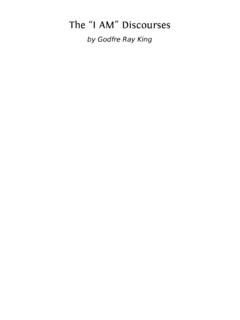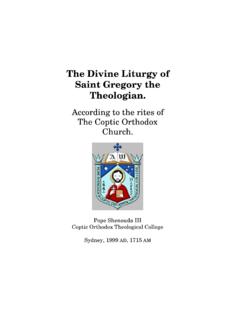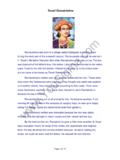Transcription of The History of Employment Law in England and …
1 The History of Employment Law in England and Northern Ireland The History of Employment Law in England and Northern Ireland The turbulent History of labourers from 1349 until at least 1562 can be seen as a record of conflict between the aristocracy of England and the growing unrest among skilled labourers. It was felt that the fruits of their own work should belong solely to them and not to the landed Gentry that employed them usually for a pittance. As a whole the development of these statutes is quite clearly an attempt to regulate and control labourers. The Ordinance of Labourers 1349 (The Ordinance) was a piece of legislation consisting of regulations and price controls issued by King Edward 111 of England on 18 June 1349. The ordinance was issued in response to the 1348-1350 outbreak of the Black Death or Plague in England . During this outbreak, an estimated 30-40% of the population died.
2 A vain attempt by the king to freeze wages paid to labourers at their pre-plague levels, is indicative of the labour shortage caused by the plague. The Black Death caused labour to be in great demand. The Ordinance was concerned with maintaining wages at rates to be fixed from time to time by JPs. This was followed some considerable time later again by statute. The Statute of Labourers 1350 fixed wages of labourers and artisans. 1356 saw the establishment of regulations for the Trade of Masons. In 1360 Edward 111 approved another statute this time prohibiting annual gatherings of the said Masons. 1368 the Statute of Labourers was confirmed and the next year legislation forbidding artificers not to import wine was added to the statute book. In 1377 King Richard 11 carried on the previous tradition of restrictions to trade.
3 This time it was a statute to restrict the freedom of serfs. While in 1389 he decreed that all Guilds and brotherhoods supply full information on their liberties, privileges, statutes, ordinance, usages and customs and to lay before the King their charters and letters of patent. In 1402 King Henry IV by statute prohibited the hiring of labour by the week. 1405-06 saw the confirmation of the Statutes of Labourers. Justices of the Peace had their authority extended in 1414 to fugitive labourers . In 1416 the King limited penalties for excessive wages for seven years. Henry VI (Dec. 6, 1421 - May 21/22 1471) ascended the throne of England on September 1, 1422 and that of France on October 21, 1422, ruling from 1437. As part of a long series of laws known as the Statutes of Labourers, he attempted to control the wages and working conditions of all the trades.
4 In practice, stonemasons, viewing themselves as under the protection of the Pope, generally ignored these statutes. Elizabeth I (Sept. 7, 1533 -March 23, 1603), ascended the throne in 1558. The Statutes of Labourers, accumulating from the time of Edward III (Nov. 13, 1312 -June 21, 1377) were codified by Elizabeth. The Elizabethan Statute of Artificers 1562 contained 48 provisions among which prohibited conspiracies to raise wages and prosecutions for criminal conspiracy at common law. The first workers associations were formed because of the legislation. These grew out of workmates meeting at public houses. Their main activity was the provision of friendly society benefits such as sick and funeral money and a tramping grant to unemployed workers willing to Business Law 8th Edition Cengage Learning 2007 prepared by Rosemary Craig BA LLB LLM PGCHEP 1 The History of Employment Law in England and Northern Ireland move.
5 Apprenticeships were limited by the workers associations in order to prevent depressing wage rates; some craft unions continue this tradition today. For most of the past 500 years Employment relations in Britain was governed by the traditional master and servant relationship. Breaches of these contracts were punishable by imprisonment, whipping, fines, forfeiture or compelled labour. There then followed what can only be described as an era of revolution in every sense of the word. This began with the French revolution, the Napoleonic wars, the Rebellion in Ireland and the naval mutiny. Parliament supplemented the common law by banning groups of workers in wool, silk, and leather. The Combination Act 1799 made this into a general ban. The French revolution at that time caused fear of radicalism hence the Combination Acts of 1799 and 1800 which enacted two further offences i) entering into contracts for the purposes of improving conditions of Employment or calling or attending a meeting for such purposes and ii) of attempting to persuade another person not to work or to refuse to work with another worker.
6 JPs could order up to 3 months imprisonment for breach of these statutes. The Masters and Servants Act 1823 permitted punishment of up to 3 months hard labour on an employee absent from service before his contract expired. Between 1858 and 1875 there were 10,000 such prosecutions per year. The unlawful combination of workmen was controlled in Ireland by the 1803 Act while its counterparts for England were the Unlawful Combination Acts 1824 and 1825. The Combination Law Repeals Act 1824 removed 35 prohibitions on combinations in various sectors of the economy and repealed most of the 1800 Act thereby ensuring that union combination was no longer criminal per se at common law (CL). The immediate aftermath was a number of violent and damaging strikes. Parliament immediately re-inacted the Combination Act 1825 and revived the CL offence.
7 It also strengthened the law on the specific crimes of intimidation, violence, molestation and obstruction which the Courts soon applied to persuading a fellow worker to join a strike (R v Rowlands (1851)) and the inducing a worker to leave in breach of contract (R v Druitt (1867)). The Combination Act 1859 modified the decision in the Druitt case and rendered it lawful to attempt, with the aim of securing changes in wages or hours peaceably and in a reasonable manner, and without threat or intimidation to persuade others to cease or abstain from work. The famous prosecution of the Dorset farm labourers known as the Tolpuddle Martyrs in 1834 still live on in union folklore today. Their crime was that they used an oath as a sign of allegiance to their new society because they could not read nor write. For this they were sentenced to transportation to Australia under the provisions of the Unlawful Societies Act 1799 and Unlawful Oaths Act 1797 (used to quell naval mutinies).
8 The legacy of the Industrial Revolution saw the decline of the Guilds and the emergence of the new unions. One year after its formation Robert Owen s Grand National Consolidation TU collapsed in 1834. The mid 19th century saw the first great expansion in trade unionism with the creation of federations of previously local organisations known as the new model Unions. Consisting of skilled craftsmen and combined efficient internal organisation with a sound financial base and a cautious approach to industrial Business Law 8th Edition Cengage Learning 2007 prepared by Rosemary Craig BA LLB LLM PGCHEP 2 The History of Employment Law in England and Northern Ireland action, they began to build a structure of collective bargaining with the Masters. This has been likened by some as reminiscent of that adopted by the Society of Engineers. The Masters were keen to talk to spokespersons rather than numerous individuals.
9 The brush making trade in 1805 agreed list of wage rates which was a historical breakthrough laying a path for that which was to follow in it wake. Naturally legislation had a big part to play. The Molestation of Workmen Act 1859 allowed for peaceful picketing in the event of strike action. A revised Master and Servant Act was passed in 1867, which supposedly limited imprisonment to aggravated breaches of contract (where injury to persons or property was likely to result). It was clear that only workers were subject to its provisions. Imprisonment even for non-aggravated breaches of contract continued when working people failed to comply with court orders for specific performance or for non-payment of monetary damages and fines. The Reform Act 1867 (also known as the Second Reform Act) was a piece of British legislation that greatly increased the number of men who could vote in elections in the UK.
10 This Act enfranchised all male householders and abolished compounding (the practice of paying rates to a landlord as part of rent). Due to this act working-class men gained suffrage for the first time in Britain. Naturally the Courts attention was directed to the new Unions legal status. The first blow came in Hornby v Close (1867). In that case it was held because a union qua union acted to restrain competition it was not entitled to the simple legal remedies available to friendly societies for recovery of stolen funds. The Trade Union Act 1871 recognised unions as legal bodies with the right to own property and funds as well as providing for their voluntary registration with the Registrar of friendly Societies. The 1873 Judicature Act rationalised the legal system in Britain by uniting seven different courts into one High Court of Justice.

